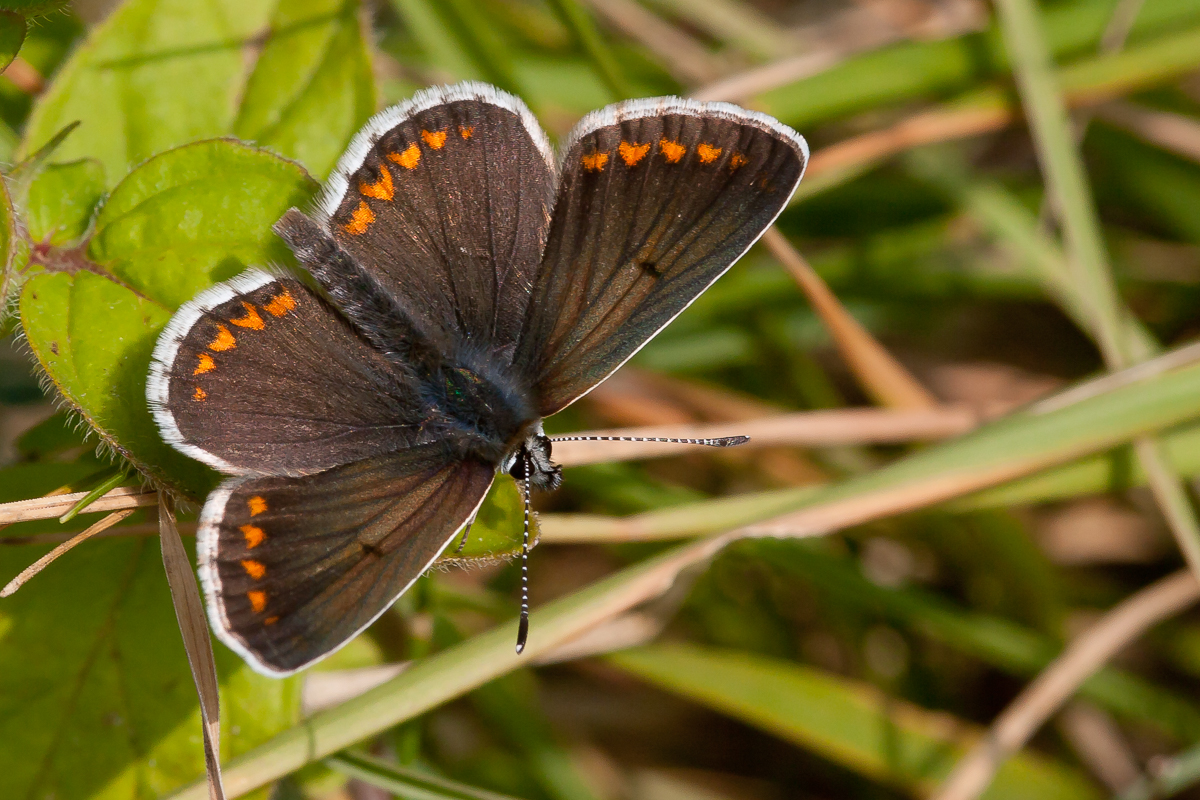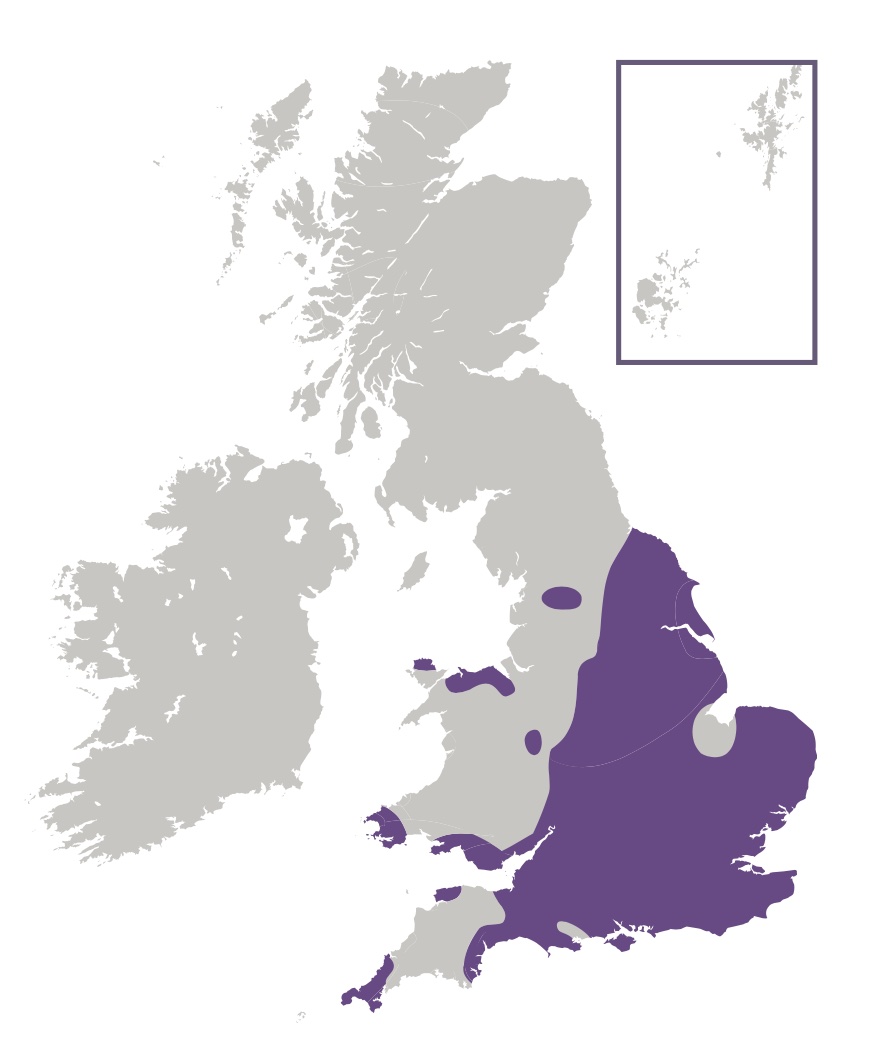
Photo © Peter Eeles
Unlike most other "blues", the Brown Argus has no blue scales on its upperside, both sexes being primarily brown in colour as its common name suggests, although the butterfly does exhibit a blue sheen when at certain angles to the light. Both sexes have beautiful orange spots on the upperside of both forewings and hindwings. This widespread species can be found south of a line between Dorset in the west and South-east Yorkshire in the east, along with colonies in Derbyshire, North Devon, East Cornwall and West Cornwall. It is also found in north and south Wales, but is absent from central Wales. This species is also absent from Scotland, Ireland and the Isle of Man. This species occurs in small, compact colonies, and is not a great wanderer, only travelling a couple of hundred metres, at most, from where it emerged.
This is a warmth-loving species and, as such, is often found in sheltered areas or on south-facing slopes. When courting, the males congregate at the base of a slope where they either perch, waiting for a virgin female to fly by, or patrol the area looking for a female perched on a grass stem awaiting a mate. Mating takes place after a short flight low to the ground. When egg-laying, the female will make meandering flight close to the ground, searching out suitable foodplants on which to lay.
Like its close relative, the Common Blue, this species will roost communally on grass stems at night. In fact, the two species are sometimes found roosting together.

Colonies are typically found on chalk or limestone downland where the foodplant is abundant. However, this species can also be found on heathland and in open woodland.
Adults feed primarily on buttercups (Ranunculus spp.), Common Bird's-foot-trefoil (Lotus corniculatus), Common Rock-rose (Helianthemum nummularium), dandelions (Taraxacum spp.), Horseshoe Vetch (Hippocrepis comosa), ragworts (Jacobaea spp.), White Clover (Trifolium repens), Wild Marjoram (Origanum vulgare) and Wild Thyme (Thymus drucei).
The primary larval foodplant is Common Rock-rose (Helianthemum nummularium). Common Stork's-bill (Erodium cicutarium) and Dove's-foot Crane's-bill (Geranium molle) are also used.
